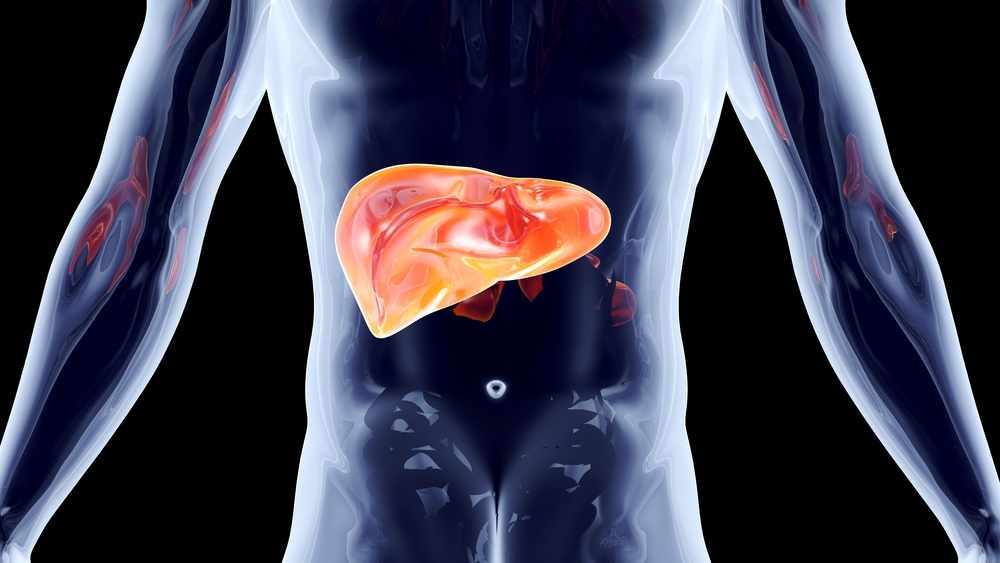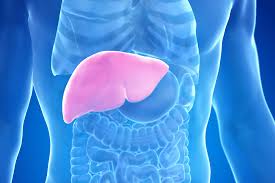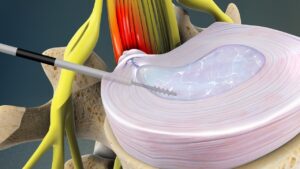In recent years, the field of interventional medicine has witnessed a tremendous boom in non-surgical treatments that promote rapid recovery and reduce complications. One of the latest techniques is radiofrequency ablation of the liver , which has proven effective in treating many diseases, including liver disease.
Professor Dr. Hesham El-Azzazi is one of the most prominent figures in the field of interventional medicine and pain management in Egypt and the Arab world. He has extensive experience in anesthesia and intensive care, and specializes in providing precise treatments for conditions such as herniated discs, osteoarthritis, and now also in the use of radiofrequency ablation to treat liver tumors.

What is radiofrequency ablation of the liver?
Radiofrequency Ablation (RFA) is a minimally invasive procedure that uses high-frequency electrical waves to heat and destroy the targeted tissue, especially cancer cells in the liver, without affecting the surrounding healthy tissue.
This technique is used to treat primary liver tumors such as hepatocellular carcinoma (HCC), or secondary tumors that have spread to the liver from other organs, such as the colon or breast.
Advantages of radiofrequency ablation for liver treatment
- Non-surgical treatment: No surgical incision is required, which reduces post-operative complications.
- High accuracy: Precise needle guidance using CT or ultrasound.
- Safety and effectiveness: High success rate in early or small tumors.
- Short recovery period: The patient can return to normal activity within a few days.
- Pain reduction: Thanks to the precise targeting, the tumor is destroyed without affecting the nerves or nearby tissues.
How is radiofrequency ablation of the liver performed?
Evaluation and Planning: The medical team, led by Professor Hisham Al-Azzizi, begins by examining the patient’s condition and performing the necessary x-rays to accurately locate the tumor.
- Anesthesia: Local anesthesia with mild sedation is often used.
- Needle insertion: Using an x-ray machine, a thin needle is inserted into the tumor site within the liver.
- Radiofrequency ablation: Electrical waves are sent through the needle to heat and destroy the tumor.
- Follow-up: The medical team monitors the patient’s condition after the session, and the patient can leave the hospital on the same day or the next day.
What are the appropriate cases for radiofrequency ablation of the liver?
- Small liver tumors (usually less than 3 cm).
- No widespread tumor spread.
- Patients who are not eligible for surgery for medical reasons.
- Desire for a safe and effective alternative to surgery.
Why Dr. Hesham Al-Azzizi is the best choice?
Professor Dr. Hesham El-Azzizi is a pioneer in the field of interventional pain and tumor treatment, with extensive experience performing radiofrequency ablation procedures for liver, spine, and osteoarthritis. Through an integrated medical team, he provides specialized and safe treatment using the latest globally approved devices and technologies.
To learn more: Radiofrequency with the best doctor for pain treatment
Is radiofrequency ablation of the liver an alternative to chemotherapy?
In some cases, yes. Especially in small or early-stage tumors, radiofrequency ablation can replace chemotherapy or be used alongside it as an adjuvant treatment, improving the patient’s chances of recovery and quality of life.
Possible complications – but rare.
Although radiofrequency is considered very safe, there are some side effects that may occur, including:
- Slight rise in temperature.
- Temporary pain at the site of needle insertion.
- Minor bleeding or bruising under the skin.
- Unintended damage to nearby tissues is rare, and only occurs if the procedure is performed without expert supervision.
That’s why we always recommend performing this technique under the supervision of an experienced doctor like Professor Dr. Hisham Al-Azzizi.
Radiofrequency ablation of the liver and post-operative follow-up
After completing the liver radiofrequency ablation procedure , the patient undergoes close follow-up, which includes:
- An MRI or CT scan will be performed within two to four weeks.
- Liver and blood function tests.
- Regular follow-up to detect any possibility of tumor recurrence.
- A customized follow-up plan is developed for each patient based on their health condition and test results.
When is radiofrequency ablation contraindicated?
- If the tumor is very large or widespread.
- If there are unstable liver lesions (such as advanced cirrhosis).
- In cases of uncontrolled bleeding disorders.
Branches and available medical services
Professor Dr. Hesham Al-Azzizi provides his medical services through a number of branches to facilitate access to patients from various governorates:
- Heliopolis branch
- Fifth Settlement Branch
- Engineers Branch
- Alexandria branch
- Assiut branch
Contact us
To book and inquire about radiofrequency sessions for the liver or any of our interventional and pain management services:
(+2) 01100388388
(+2) 01208188181
(+2) 01101189898
(+2) 01101198989
conclusion
Radiofrequency ablation of the liver is currently one of the most advanced techniques for treating liver tumors effectively and safely, without resorting to traditional surgery. With the expertise and proficiency of Professor Hisham Al-Azzazi, patients can achieve the best possible results thanks to the combination of experience and modern technologies.
If you or a loved one are suffering from liver problems or liver tumors, do not hesitate to visit one of our branches and begin your treatment journey safely under the supervision of a select group of specialized doctors led by Dr. Hisham Al-Azzazi.
The most common questions about radiofrequency ablation of the liver
The doctor inserts a special needle guided by radiation (such as ultrasound or CT scan) into the tumor. The tip of the needle is heated to destroy cancer cells.
It is usually performed under local anesthesia or sedation, but in some cases, general anesthesia may be used depending on the patient's condition.
Yes, in many cases it is an effective alternative, especially if the tumor is small or the patient cannot tolerate surgery.
Yes, it can be repeated if new tumors appear or the tumor was not completely eliminated the first time.




